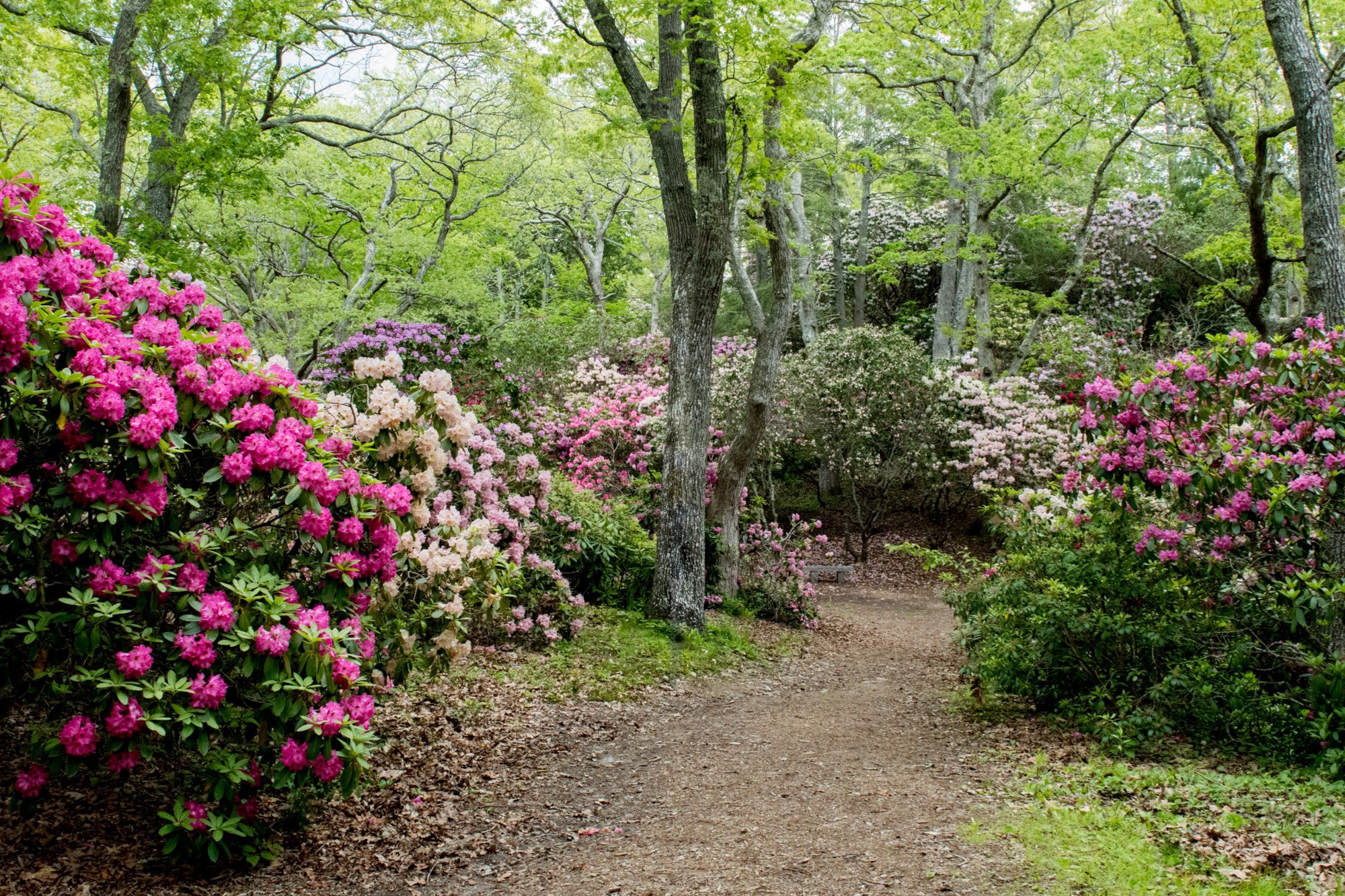Why Doesn’t Everybody Grow Japanese Skimmia?
By: Iris Clearwater, Senior Gardener
For the entire month of April, every time I turned the corner by the labyrinth, I was overwhelmed with a heady, exquisite perfume, resembling jasmine. It took me a while to locate the source to be a low cluster of beautiful Japanese Skimmia.
I have already been a fan of its gleaming, lasting, red berries in fall and winter, its umbels of delicate, cheerful pink flowers that arrive early and keep blooming for weeks in the spring, it’s tidy, compact, rounded habit of shiny, green, evergreen leaves – and now I’ve fallen completely in love with it’s intoxicating fragrance of spring.
It thrives in our eastern acidic soils in the partial shade most people struggle with. You don’t need to prune it, and it requires almost no care. It does need some moisture, and as it is the females that produce the berries, so be sure to get a group of them to keep each other company, and a male or two to entertain them.
Here is a website with more info: https://www.artsnursery.com/article/how-to-grow-skimmia
Since it is a low growing understory plant, and not native, a fantastic plant to pair it with is winterberry holly, Ilex verticillata, a stunning native queen of shrubs with countless cultivars for habit and shades of its brilliant berries.
Remember, to get that brilliant color, you need to have males and females, but the males get around, and you only need one within 40 feet of up to 20 females.
Here’s a great article about this gorgeous native plant: https://piedmontmastergardeners.org/article/winterberry-holly/
Two wonderful plants that need to be celebrated, and planted more of, to nurture our eyes and hearts in spring and fall, while feeding pollinators and birds too.








